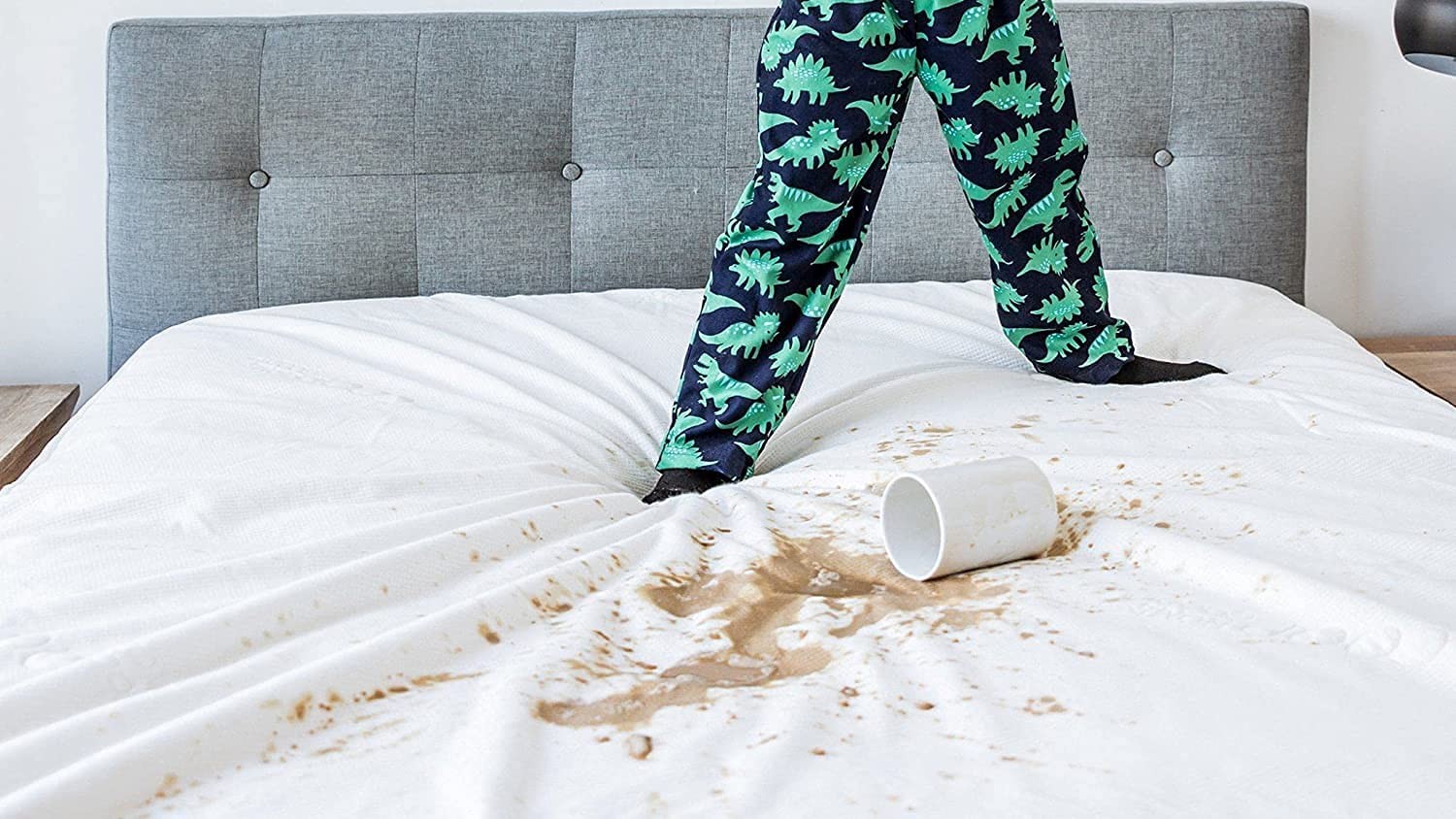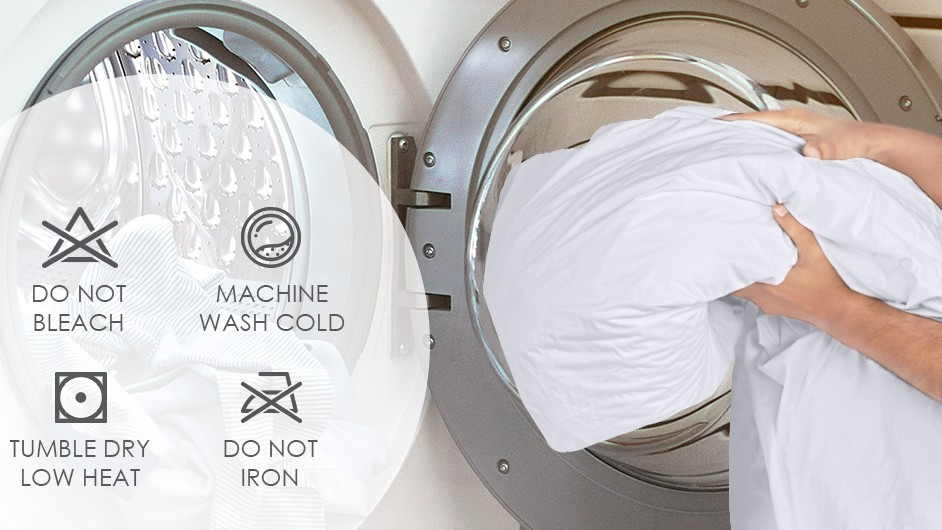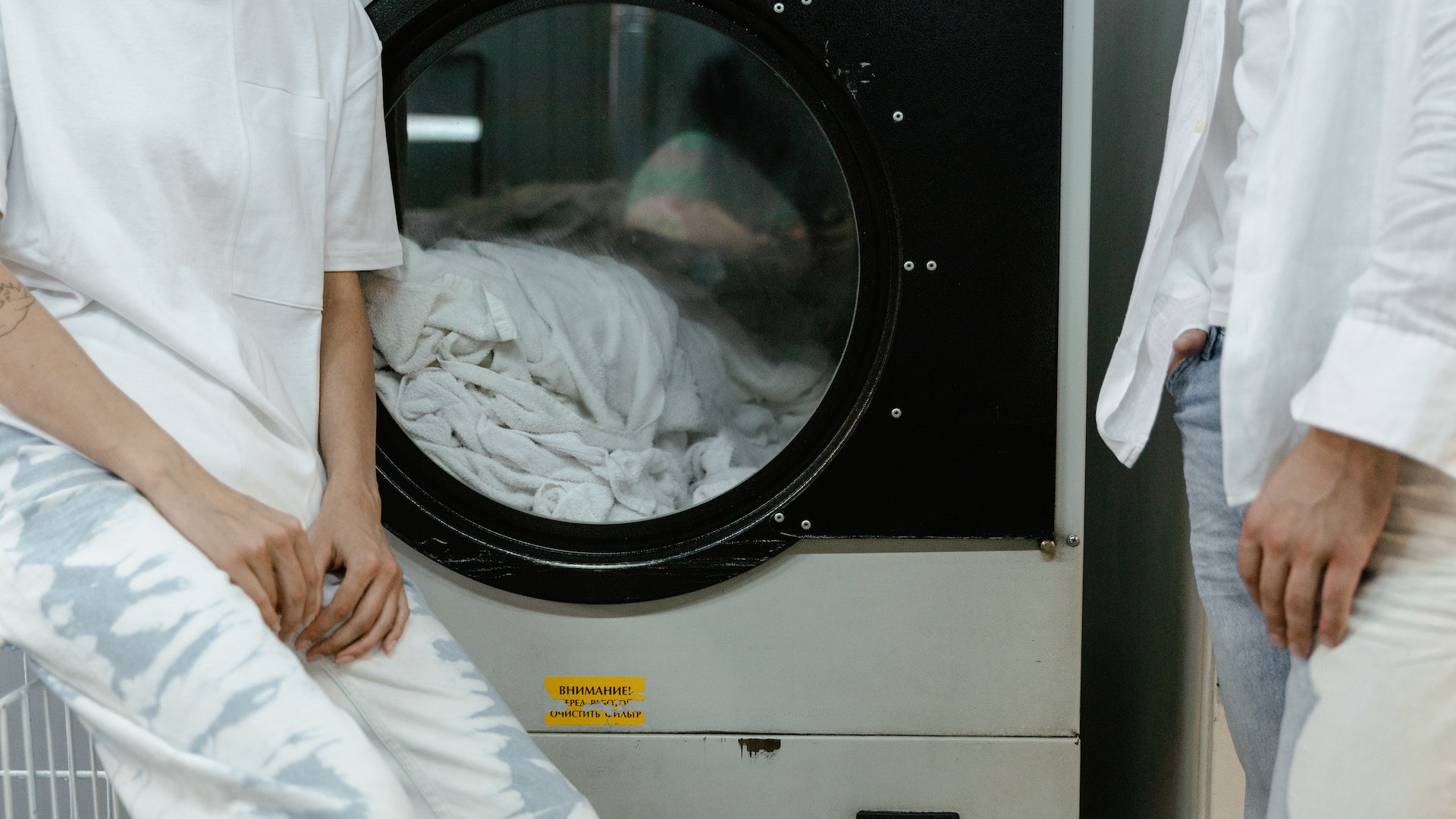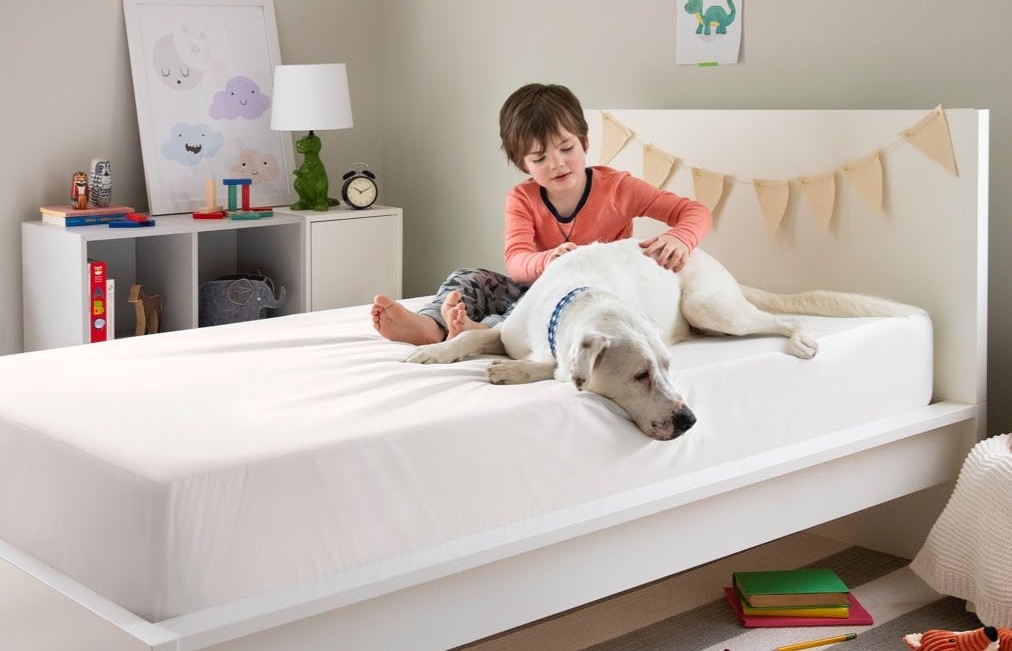
A mattress protector as the name suggests acts as a barrier between you and your bed to safeguard it against dirt, dust, sweat, spills, stains and bugs. However, even the best mattress protectors need to be cleaned regularly to continue to do its job properly. This guide will run through exactly how to clean a mattress protector to ensure it stays fresh and hygienic in order to protect your bed.
If you've invested in the best mattress, developing a regular cleaning routine for your mattress protector will help extend its lifespan. This is also a key step in bedroom hygiene especially when you’re hosting multiple guests over a short period of time.
The good news is that you don't need any special equipment, as in most cases, you'll just require a normal washing machine and a light detergent. (Having said that, almost all mattress protectors will come with detailed cleaning instructions on the care label, so do check these first.) Read on as we explain how you should clean your mattress protector in a safe and effective way, and how often you should do so.
1. Preparing to wash your mattress protector
Before chucking your mattress protector in the washing machine, there are couple of things you need to do. Firstly, check for obvious dirt, dust, and human and pet hair. The more of this you can remove before putting it in the washing machine, the better. You may want to use a brush, or even a vacuum cleaner attachment.
Secondly, check for obvious stains. If these are noticeable, it's better to spot-clean them first using a soft cloth and a dash of stain remover, or mild laundry detergent. Let the latter sit on the material for at least 10 minutes before adding it to your washing machine
Thirdly, if there is a nasty smell, then sprinkle over baking soda to absorb it, spray your mattress protector with water, and let the mixture soak in for an hour or so, before adding it to the machine.
2. Washing your mattress protector

Mattress protectors are thin, light and fragile, so generally they should be washed on a gentle cycle using a mild detergent. Avoid adding bleach or chlorine as they may damage the fabric. That said, always check the care label first, as mattress protectors differ in their materials and design, and so cleaning instructions may vary. In particular, check the maximum temperature they can be washed at, which will be 100°F in most cases.
Sign up to get the BEST of Tom's Guide direct to your inbox.
Get instant access to breaking news, the hottest reviews, great deals and helpful tips.
After the wash, put the mattress protector on a spin cycle so that every drop of detergent is removed. Otherwise, it can lead to mold and mildew growing on your mattress protector, as well as potentially causing an allergic reaction.
3. Drying your mattress protector

Like all bedding, it's important to dry your mattress protector thoroughly after washing. If any moisture remains when you put it back on your mattress, it will encourage mildew. So either air dry your mattress protector – outside in a well-ventilated place, ideally in the sun – or tumble-dry it on a low heat and low tumble setting. (Any hotter and it can cause the material to melt).
It's normally safe to tumble-dry your mattress protector with other bedding or clothes. Again, though, it's important to check the care label first, as it may contain specific instructions for your mattress protector.
If you choose to air-dry, bear in mind that a mattress protector takes longer to dry than a fitted sheet. Depending on the conditions, it may take several hours to dry completely. So it's a good idea to have a spare one and rotate them, rather than having to spend a night without a mattress protector on your bed.
Lastly, mattress protectors should never, ever, be dry-cleaned or ironed. Both practices will damage the fabric and make them less protective.
How often should you wash a mattress protector?

Most experts advise you should clean or change your bedsheets, pillow cases and duvet covers at least once a week. Because your mattress protector lies beneath the sheets, though, it only needs to be cleaned every one to two months. However, there are exceptions to this rule.
Firstly, you should always wash your mattress protector before you use it for the first time. This will help eliminate any bad smells. Secondly, if you experience spillages, then it's best to wash the mattress protector straight away, especially if they involve blood or urine.
Thirdly, if you allow pets to frequent your room then it's better to wash your mattress protector more often; ideally, along with your main bedding. And fourthly, if you've had a cold or similar illness, it's best to wash your mattress protector – along with all your other bedding – as soon as it's passed.
Finally, a word about guest bedrooms. Even if no-one has slept in them for a while, you should still clean the bedding and mattress protector on them, at least every one to two months. Dust, dirt and bacteria don't need human help to infest a mattress, after all, so you still need to keep these invaders at bay through regular laundering.
Tom regularly writes about sleep for Tom's Guide and our sister site T3.com. Over the years he's tested a number of mattresses, duvets and pillows, and as a back pain sufferer, has a keen interest in finding ones that offer maximum support. Plus, in running a successful Airbnb business, sleep hygiene and providing the right bedding for guests has become a big part of his day-to-day life.

